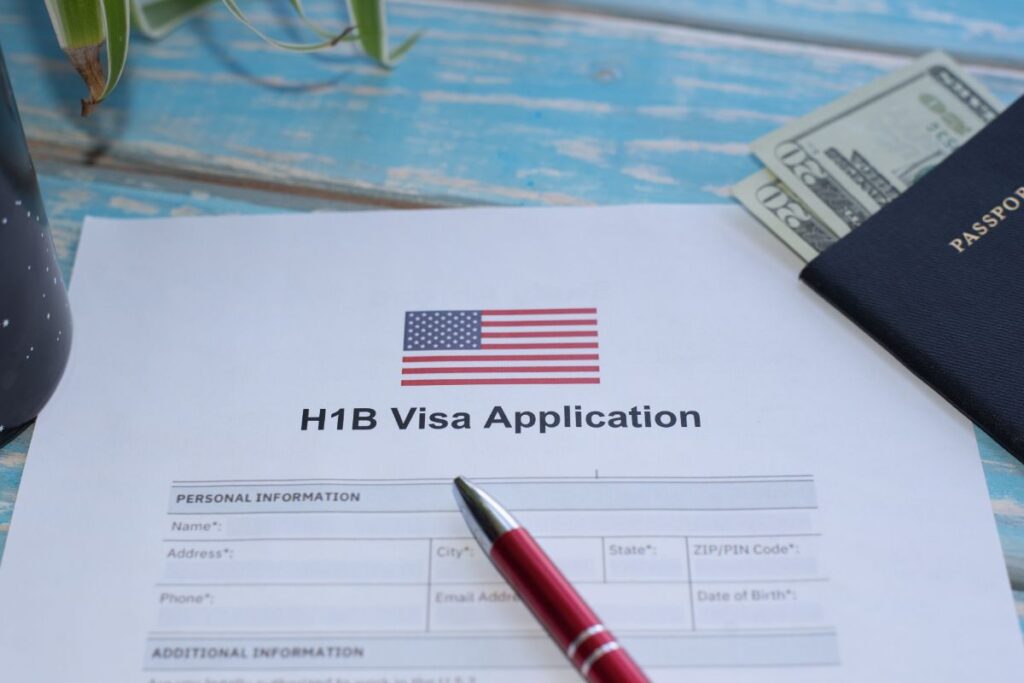As a foreign individual aspiring to work at McKinsey for a specific period of time in the US, you need to understand whether the company sponsors the H-1B visa.
McKinsey offers H-1B sponsorship to current company employees working in other countries as well as new foreign job applicants. However, obtaining this visa entails a comprehensive procedure that involves the following steps:
- Apply to McKinsey and receive a job offer
- Complete the Labor Condition Application
- Prepare the H-1B petition
- Submit the H-1B Application to USCIS
- Wait for the application approval
- Apply for the visa once the application is approved
In this article, I will discuss “Does McKinsey sponsor H-1B” and the step-by-step visa application process. I will also check out the federal definition of the work visa and the benefits the company can derive from sponsoring employees.

H-1B Visa – Explained
Before we delve into whether McKinsey sponsors H1B, let’s fully understand the meaning of it.
The H-1B visa classification in the United States allows companies to employ exceptionally skilled foreign professionals for specialized positions.
The visa grants temporary work authorization for up to six years and allows foreign nationals to contribute their abilities to American companies.
(Source)
To meet the requirements for the H-1B visa, you would need:
- A job offer from a U.S.-based company for a position requiring specialized knowledge.
- A bachelor’s degree or equivalent practical experience in the relevant field.
- Employer to demonstrate that there is a lack of qualified U.S. candidates for the position.
(Source)
McKinsey H-1B Sponsorship Policy
McKinsey is committed to hiring and retaining top talent from around the world, and sponsoring H1B visas is just one way the company supports this goal. In 2022, the consulting firm held the 64th position among all visa sponsors in the United States.
(Source)
However, McKinsey only sponsors visas for qualified individuals who meet the following criteria.
- A certain level of education
- Expertise in a particular area
- Relevant work experience
McKinsey may also consider sponsoring visas for individuals who are currently working for the company in another country and are looking to transfer to the U.S.
A company employee at PrepLounge says: “McKinsey definitely sponsors visas as they did for me. In order to do so you either have to join post your studies in the US (either undergraduate or postgraduate degree), or you can work for an office in your country and then transfer over after 2 years if you’re a high performer.”
(Source)
The table below shows the number of McKinsey-sponsored H-1B visas for each year from 2020-2022:
| Year | Number of H-1B Visa |
| 2020 | 471 |
| 2021 | 751 |
| 2022 | 821 |

How to Apply for H-1B with McKinsey? 6 Steps
While applying for H-1B with McKinsey, you need to contact the H.R. department of the company for the most up-to-date information regarding the process since the application procedure is subject to change.
However, having spoken to an employee at the HR department, the current application process involves these 6 steps:
Step 1 – Receive a Job Offer
The first step of the process is to apply for a job at McKinsey by visiting their website. Since H-1B is an employer-sponsored visa, the company will initiate the application process on your behalf once you have been selected for a position.
Step 2 – Complete the LCA
Next, McKinsey will file an LCA form with the US Department of Labor before submitting your H-1B application. This form confirms that McKinsey will pay you at least the prevailing wage for your position and that your working conditions will not adversely affect other workers.
Step 3 – Prepare the H-1B Petition
In the next step, McKinsey’s HR department or legal team will prepare the necessary documents, including Form I-129, a petition for nonimmigrant workers.
Here’s a document checklist that will help you gather the necessary supporting evidence for the petition preparation:
- Passport
- Educational transcripts
- Work experience letters
- Relevant certifications
- Resume
- Proof of English Proficiency
(Source)
Step 4 – Submit the H-1B Application
Once the LCA is approved, McKinsey will submit your H-1B application to the US Citizenship and Immigration Services (USCIS), including the LCA, your supporting documents, and a letter from McKinsey confirming your job offer and sponsorship.
Step 5 – Approval of the H-1B Petition
The next bit falls in the USCIS domain. Workers at the department will review your application and may request additional information or documentation.
If your petition is approved, you can proceed with the visa application. However, McKinsey may appeal the decision if your H-1B petition is denied.
Step 6 – Apply for Visa
After your petition is approved, you need to schedule an appointment at the U.S. embassy or consulate in your home country. Once you’ve had your visa interview, the next thing in line is to pay the application fee.
If the consular officer approves your visa application, you’ll receive the H-1B visa stamped on your passport.
(Source)
Benefits of H-1B Sponsorship for McKinsey
As a leading global consulting firm, McKinsey recognizes the advantages of sponsoring H-1B visas for highly skilled foreign professionals.
1. Recruit Top Talent
Sponsoring visas for employees allows McKinsey to hire highly skilled foreign workers who may have expertise that is scarce in the US labor market. This enables the company to expand its talent pool and add value to client engagements.
2. Enhance Diversity and Inclusion
H-1B sponsorship promotes McKinsey’s commitment to diversity and inclusion by providing equal opportunities for foreign workers.
(Source)
3. Retention of High-Performing Employees
McKinsey’s sponsorship of employees is a strategic move to retain talented individuals who may be forced to depart the country due to visa issues.
This benefits not only the individual employee but also the company as a whole. Why? Because it helps build loyalty and commitment, as people feel supported and valued by the organization.
